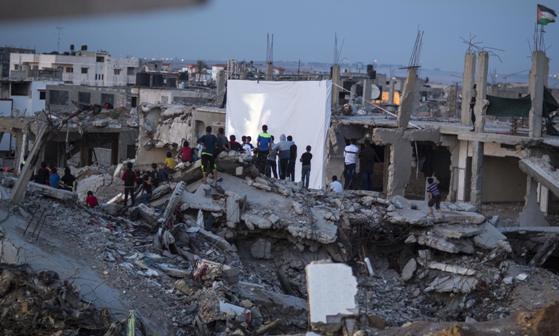Source: Extract from Andrew Collins, ‘Gods, monsters’, Never Knowingly Underwhelmed blog, 28 March 2011, http://wherediditallgorightblog.wordpress.com/2011/03/18/gods-monsters/
Text: To the Curzon in Mayfair for our second go at NT Live, where the National Theatre in London beams one of its productions, live, or as-live, around the whole world. This time: the much-discussed rendition of Mary Shelley’s Frankenstein by writer Nick Dear and director Danny Boyle. Having already seen and been enthralled by Rory Kinnear’s Hamlet in this format in December, I can honestly say that this experience topped it. Not only was the production something to behold, but Hamlet was in the smaller Screen 2 at the Mayfair – we were moved there to accommodate the gala opening of some new film called The King’s Speech, which sank without a trace as far as I can tell. Anyway, Frankenstein was in the massive Screen 1. Much better. […]
Here’s the deal: people at the National Theatre on the South Bank watch actors do a play. People not at the theatre but in cinemas around the country, and the world, also watch actors do a play, at the same time. It’s a brilliant initiative, and even better if you’re a member of the Curzon and your tickets are discounted. But it’s particularly brilliant if you don’t live in London. I know because people were chattering excitedly about it on Twitter yesterday that it was showing at the mighty Duke Of York’s in Brighton, for instance. […] So, that’s the background. What about the play? After all, the play’s the thing.
Well, Frankingstein [sic] has been running for a month at the National and has been showered with positive notices. (Emma Freud, who stands in the NT auditorium and introduces the live link-up while confused theatregoers take their seats behind her and gawp vacantly into the camera, informed us that people are queuing up for tickets at 1am. I must admit, we booked our tickets for the Curzon showing before Christmas, sensing a sellout, which it was. Imagine a play that not only sells out the theatre it is in, but auditoriums it is not in.) You have to see these things for yourself sometimes. I am not an inveterate theatregoer, as we have established. I’ve seen some plays. Living in London is a bit of a privilege in that sense, but I’ve always felt a little bit ripped off when I’ve seen some men and ladies standing around talking to each other. If I’m going to pay West End prices, I want to see men and ladies dancing and singing. So, bear that in mind when I review this, as I am only comparing it to a handful of other plays I have seen. In many ways, I’m an easy lay, as I am just excited to be watching a play.
Danny Boyle is known as a filmmaker, but he started out in the theatre, as everyone will tell you. Well, that’s as may be, but he brought a cinematic eye and sense of occasion to Frankenstein. Beginning with the creature’s birth and following his infantile development – he walks! he talks! he reads Milton! – most of the first act is wordless. It’s just Benedict Cumberbatch (or Jonny Lee Miller – the pair alternate the main roles of Creature and Frank[en]stein) crawling and hobbling around the vast, bare stage, and grunting his way to coherence. Ironically, although this section is a tour de force, it’s made more cinematic when you watch it in the cinema, as you get close-ups and pans, and – something really special for the non-theatre audiences – aerial shots! So, what we saw in the Curzon is not what they saw at the National. They will say theirs was better, because they were in the same hall as Benedict Cumberbatch and Jonny Lee Miller off of the telly and the films, but I will say that ours was better. Funnily enough, the theatre crowd were still rudely talking when the play started. We were really quiet in the cinema. A huge bell sounds to signal the play has started, and yet, there they were, the big London theatre ponces, still muttering as Cumberbatch’s hand started feeling around inside the womb of his creation.
Unless you can afford to go twice in succession, you’re going to have to play the Cumberbatch/Lee Miller Lottery like the rest of us. Who will it be? It’s like a theatrical Kinder Egg – literally, as the creature bursts out of his membranous shell. Having experienced the full two hours, with no interval (Danny Boyle the bad boy rule-breaker!), I’m going to stick my neck out and say that I’m glad we got the Cumberbatch monster. It is a performance to leave your head spinning with its sheer physicality, nuanced grostequery [sic] and well balanced pathos/bathos. Lee Miller has less to do as the professor, less stagetime, and he had an audible sore throat last night, so heaven knows how he’ll cope as the grunting and squealing monster tonight. Vocalzone to the rescue, one hopes.
It’s actually scary, which is no mean feat for a stage play. The design and the lighting were spare and epic at the same time, with a stunning ceiling light made of hundreds of tiny individual bulbs that could undulate or burst into a retina-searing dazzle, and a revolving circular stage that occasionally gave birth to bits of scenery, and also coped with rain, snow and a roaring fire from below, not to mention a strip of what looked like actual grass that seemed to grow from nowhere. The design and the music – by Underworld – combined to create a fabulously Gothic setting, against which a fine cast could do their best with a script that at times was over-ripe, but on the whole managed to balance the philosophical and the portentous with bawdy and silly humour. You might find, say, the broad Scottish accents of the graverobbing crofter and his son a bit Fraser-from-Dad’s-Army, but it’s a period piece, and you have to take that onboard. There is no trendy modernisation here. It’s all industrial machinery and gaslight and rabbit stew cooked over a hearth. Naomie Harris off of the telly and the films, had a thankless part as Frankenstein’s intended, Elizabeth, until the grisly denouement, but Karl Johnson was fantastic as the old blind man who “sees” past the creature’s ugliness and identifies his soul.
I wonder if Cumberbatch and Lee Miller will share the theatre awards next year? They sort of should. Many critics said that Lee Miller’s monster was better than Cumberbatch’s. But they saw both.
I tried to read Shelley’s novel in my early twenties and gave up, defeated. Maybe I’ll give it another crack. They played a short making-of documentary before the play – risking letting light in upon magic, although the footage was from rehearsals and not the production itself – and Frankenstein was described by some academic or other as a creation myth for the age of science. This is a fascinating idea, and one that’s not fully explored in, say, the classic 1931 film of Frankenstein, which, as Boyle notes, took away the creature’s voice. His version gives it back.
Oh, and despite a full house, the two seats in front of us were empty. RESULT!
Comments: Andrew Collins is a television scripwriter, broadcaster, journalist, and film editor of the Radio Times. The stage production of the National Theatre’s Frankenstein was broadcast at part of the NT Live series on 17 and 24 March 2011. The cast included Benedict Cumberbatch and Jonny Miller, who alternated in the roles of Frankenstein and the Creature. The Curzon Mayfair is a London cinema. My thanks to Andrew Collins for permission to reproduce his blog post here.
Links: NT Live website for Frankenstein


